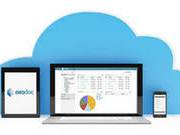Implementing an Electronic Document Management system: before, during and after
We cannot deny that current documentary production is, to a large extent, in electronic media. Regardless of whether it is a public or private entity, this is the common denominator. Just as it is, that Document Management continues to focus on documents that are produced or received in analog media and therefore, current electronic document management is an almost certain path to digital Alzheimer’s, but we will talk about it later. . Today I want to talk about what to do before, during and after, as the title of the post suggests.
Before
In my short experience in this field, I have seen how important this phase is. Thinking before acting is not a cliché phrase, but here it means a guarantee of success. This phase is focused on planning prior to acquiring the software, on evolving the company to obtain the best possible result and thereby guarantee a smooth change. The following points are a part of what I consider they should be. I hope they’ll be useful!
1. Create a culture around files: The success of an electronic document management software implementation project depends on the culture that exists around document management. This is, basically, that everyone understands the importance of having organized files, with extensive levels of description and accessible whenever they are required.
2. Having well-defined instruments: Document Management is based on instruments that guarantee that entities have archives in the best possible conditions. Before acquiring software, we must have all the necessary instruments for its current management (document retention tables, archival description instruments, control and access tables, PGD, PINAR, among others)
3. High-level alignment: Document Management is transversal to the entire entity, but more than that, it must be seen as a high-level objective, which allows contributing to the corporate mission and vision. With this idea, the support of the management of the organization will be much clearer, since the mismanagement of the files will lead to the non-fulfilment of the high-level objectives of your company.
4. Consolidated work team: One of the greatest weaknesses of companies when implementing software for electronic document management is not having teams specialized in document management issues. It is important that the teams responsible for document management are solid teams with extensive knowledge of technical matters and the company.
With regard to the software implementation project, it is necessary to think about having a leading team, which brings together personnel from many departments, who are born leaders and who can easily spread the strategy and thereby facilitate the immersion of the new system in the entity.
5. Align strategies with other areas: The implementation of a system for the management of electronic documents must be a strategy led by the areas in charge of document management. However, given the technological nature of the project, the groups in charge of system administration must be strongly involved. Equally important are the areas that plan the process, so that the project strategy can be reflected in the medium and long-term plans and objectives.
6. Clearly define the requirements: Once the previous points have been fulfilled, a top down recognition of the company must be carried out. Know well what you need in terms of documents and processes.
At this point I recommend a look at MoReq, and the guide from the Archivo General de la Nación, Colombia , to define requirements. But I also recommend not stopping there, and based on the need of the company, which is usually very specific.
In the same vein, non-functional requirements are also vital. Mainly those that correspond to the user, since this, in the end, will be decisive in the success or failure of the system.
7. Experiences in the sector: Companies in the insurance sector will provide you with a number of experiences. My recommendation is to take some time to get to know the ones that may be significant and allow you to carry out the project in the best possible way.
8. Zero paper: The promise of many is the reduction to zero paper production. This is a premise that often leads to failure, since achieving “zero paper” is a matter of adding many variables, and software is just one of them. Contemplate “zero paper”, but not as a short-term goal, but as something in the long term. It is achievable, but it requires document management to mature, the organizational culture to mature, and the software processes to mature.
9. Return on investment: Document management is usually seen as an “expense” in entities. And the purchase of a system will represent a new one. The planning of the process must consider the return in the medium and long term.
During
My advice: Do not start this phase until you have a high level of maturity in terms of document management, know the user very well and ensure that the document management strategy is aligned with the entity’s high-level objectives.
10. Appoint a consultant: Very useful if there is no person in the company with previous experience in electronic document management system implementation projects. And even if there is, it is better to have an external voice that allows us to see situations that are sometimes not seen in the day-to-day routine. It is vital that this consultant is an expert in the matter and that tangible products and a minimum presence be defined, to guarantee follow-up and impact in the process. In this case, my services could well be of use. You can contact here.
11. The best solution: The process of buying the system is a complex process and in which a lot of time should be invested to analyze all the options well. My recommendation is that the best software is the one that is capable of covering the most needs of the company . For this reason, it is important that the list of requirements has the same points as those of compliance and thus we can have a somewhat more objective evaluation. Said evaluation will demand time, on the part of the company and the possible supplier, therefore it is important that there is enough time to guarantee a well-done process.
12. Full-time dedication: Once you have a defined solution, you must guarantee a project team with extensive dedication of time and work shoulder to shoulder with the company that provides the system.
13. Redefine document management… and processes: The new system means changes, adjustments must be made to the archival instruments, as well as to all its procedures in order to put the system into production. In itself, the software will involve substantial changes and therefore it is important that they are updated and aligned to deal with this change.
14. Integration: The Electronic Document Management system must centralize the production and reception of documents from all corporate systems. This implies that the system talks with the entire software ecosystem and is capable of centralizing what they produce, based on Document Management policies and instruments.
15. Change Management: I am one of those who believes that every software implementation project should implicitly carry Change Management. And not only as a training process, but as a mini-project that makes it possible to identify strengths and weaknesses and thus enhance the former and reduce the latter. A good change management process leads to identifying groups of leaders capable of transmitting the change that is intended to be made at all levels.
16. Follow-up: Constant follow-up will allow you to quickly identify milestones that are behind schedule and be able to take action on the fly. It is important to combine methodologies to ensure comprehensive monitoring at all levels of the project.
Then
At this stage, the important thing is continuity . Guarantee that the processes mature and look for the entity to evolve. It’s possible? Yes, as long as it is constant and short, medium and long-term objectives are defined and these objectives are followed up.
17. Continuity: The implementation of an electronic document management system is an issue that does not end. Day by day it must be updated and improved in order to comply with all the needs of the company. If continuity in the process is guaranteed, maturity will be achieved in the system, which will lead the entity to achieve a measurable and clear level of evolution.
18. Evolve: Document Management is a piece within a larger process. With a mature system and entity, the next step is to think about knowledge and data. The first thing is to optimize the processes and the information they generate to make decision-making more efficient and accurate, that is where the system will gain value as it is the source of real and reliable information. The second, data management, will allow processing, analyzing and using large volumes of data, in this document management will have helped because it will allow faster and less expensive processing by having organized data
A post by Sergio Gómez Flores, leader of Document Management at Evolution Technologies Group. Twitter: @sghomez









